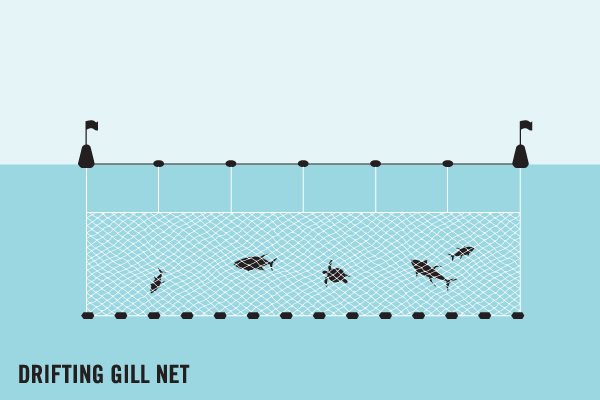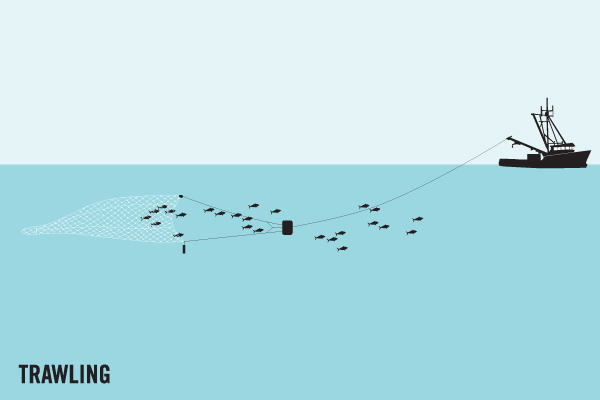Average Weight/Length
Usually well under 10 pounds, but occasionally more than 20. World record 29 pounds;
Other "Popular" Names for this Fish
Brown Grouper, Broomtail Grouper, Abadejo
Location Habitat
Sometimes fairly close to shore, but generally sticks to deep reefs and ledges offshore. Found over ledges and high-relief rocky bottoms in the eastern Gulf of Mexico; at low-profile bottoms at depths of 30 to 100 m in North Carolina; this species was the most abundant grouper in areas of living Oculina coral formations at depths of 70 to 100 m off the east coast of Florida. This species apparently moved inshore when bottom temperature fell below 8.6°C. Juveniles found in shallow water at jetties and in mangrove areas.
Biology & Physical Description
Overall coloration is a deep tan or chocolate brown, with numerous darker markings that form dots, or lines, or groups of lines. Elongated rays of the caudal fin give the broomtail appearance. Dorsal spines (total): 11; Dorsal soft rays (total): 16-18; Anal spines: 3; Anal soft rays: 10 - 12. Distinguished by the following characteristics: four color patterns, first is brown phase with head and body pale brown covered with small reddish brown spots that extend onto median fins, second is cat's paw phase with pale brown body color with dorsolateral parts of body having several clusters of dark brown spots resembling the paw print of a cat, third is with large adults with grey-head phase with the rear two-thirds of the body dark, head and body anterior to the 6th dorsal-fin spine in silvery grey with dark reticulations and fourth is bicoloured phase with pale brown anteriorly and abruptly dark chocolate brown posteriorly; depth of body contained 3.0-3.4 times in SL; head length 2.6-3.0 times in SL; convex interorbital area; angular preopercle, angle with distinct bony lobe; serrate interopercle and subopercle; posterior nostrils of adults 2-4 times larger than anterior ones
Geographic Species Map (Fishbase.org Map)
|
|

|
Summary of Distribution: Western Central Atlantic: Gulf of Mexico and east coast of US from North Carolina to Key West and along the southern shore of the Caribbean Sea. Juveniles are occasionally found as far north as Massachusetts. |
|
Note: Distribution range colors indicate degree of suitability of habitat which can be interpreted as probabilities of occurrence (fishbase.org) |
|
Sport Fishing Techniques
|
|
Gill netsGill-nets are the dominant gear in the Indian Ocean. Gill-nets are used in artisanal and semi-industrial fisheries, contributing to 30-40% of the total catch. The net design is comprised of continuous panels of uniform mesh size, aimed to trap fish behind the gills. The International Sustainable Seafood Foundation (ISSF) notes that rates of sharks and turtle by-catch in Indian Ocean gill-net fisheries are high.. |
|
|
|
Kite Fishing (Rig)A Kite Fishing Rig is.... |
|
|
|
River DriftRiver Drift means to use the.... |
|
|
|
TrawlingTrawling is when.... |
|
Tackle & Baits
Sheer depth-typical of many Panhandle bottom-fishing drops-may necessitate rods and lines stout enough to handle very heavy sinkers. In depths where practical, however, spinning and baitcasting tackle will handle Scamps admirably-and provide great sport as well as a great dinner. Leadhead jigs weighing 3/4 of an ounce to 11/2 ounces get lots of strikes with light gear-and if the bare jig isn't producing, it can be tipped with a strip of cut bait, or a whole small baitfish, and used as a bottomfishing rig. Any kind of small fish makes a fine livebait. Shrimp, squid and cut baits also do the job. Large diving plugs draw strikes in fairly shallow water-to about 50 feet.
Game Rating
Game Rating : 8.5/10
Game Description :
Outstanding on light tackle, but most are overpowered by heavy gear.
Food Rating
Game Rating : 10/10
Game Description :
Excellent. Commercially considered as the prize of all the Groupers.




















 Scamp
Scamp 





